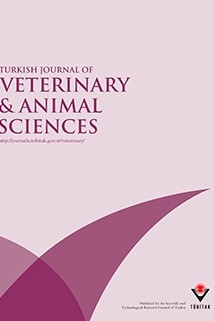
Turkish Journal of Veterinary and Animal Sciences
Yazarlar: Hasan Basri ERTAŞ, Burhan ÇETİNKAYA, Adile MUZ, Hasan ÖNGÖR
Konular:-
Anahtar Kelimeler:Campylobacter coli,Campylobacter jejuni,PCR,Chicken,CeuE
Özet: The purpose of this study was to isolate Campylobacter species from the intestines and livers of chicken and to identify Campylobacter coli and Campylobacter jejuni by both conventional methods and Polymerase Chain Reaction (PCR). Four specific primers derived from the ceuE gene present in the genomes of C. coli and C. jejuni were used for PCR identification. In the examination of 150 intestine and liver samples by culture and PCR, 25 (16.6%) and 32 (21.3%) were identified as C. coli and C. jejuni, respectively. It was concluded that the PCR assay used in this study may successfully be applied for the differentiation of these species as an alternative to conventional methods, owing to its accuracy and speed.